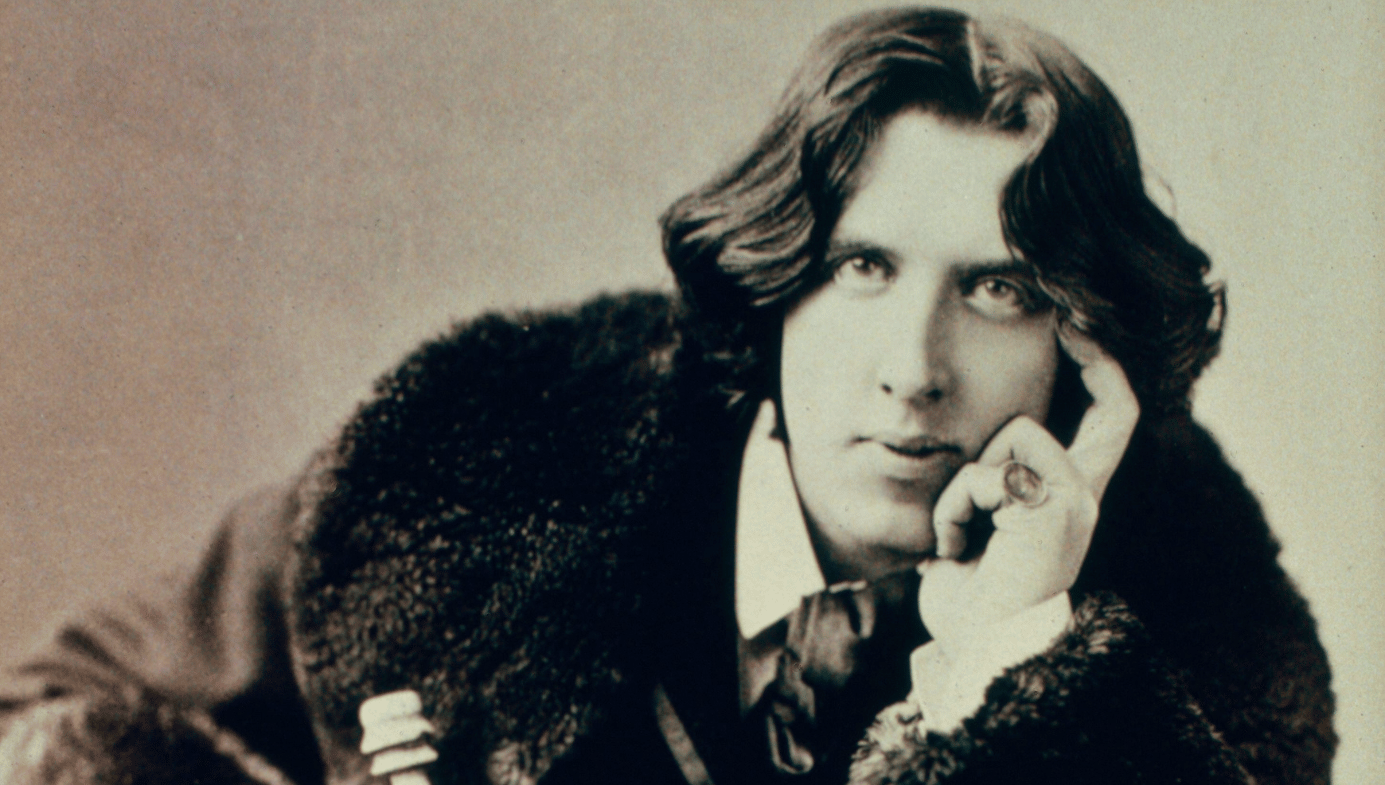Sex Differences in Occupational Attainment are Here to Stay
The sex difference here is found in hunter-gatherer, pastoral, and agricultural societies, as well as in early empires, developing nations, and the modern world.

In many nations and for many people, the sex difference in occupational attainment is a social pathology that begs for corrective intervention. The ultimate societal goal for many is equal numbers of high-achieving men and women across high-status fields, including those that typically draw more of one sex or the other (e.g., men in engineering)[1]. Here, I place the sex difference favoring men in occupational attainment in an evolutionary perspective and show that this pattern will be immune to all but the most draconian interventions, such as legally-imposed quotas. The reason for this is simple: The relation between social dominance and reproductive success is typically stronger for males than for females, and this in turn favors the evolution of traits that facilitate male status striving[2].
In the first section, I show that the achievement of social status and some degree of success in culturally-important domains are more strongly related to men’s than women’s reproductive prospects and success. The sex difference here is found in hunter-gatherer, pastoral, and agricultural societies, as well as in early empires, developing nations, and the modern world. One result is that men have an evolved motivation to increase their social status and to attempt to gain control of culturally-important resources, whether these resources are cows or cash[3]. Women of course also benefit from improved status and resource control, but the evolutionary costs and benefits differ for each sex and have resulted in stronger status-related motivations and behaviors (e.g., long work hours) in men than women.
The expression of men’s status striving strongly contributes to the sex difference in occupational attainment that continually frustrates gender activists and thwarts policy edicts aimed at equality of outcomes. In the second section, I illustrate how sex differences in status striving manifest in modern contexts and how these are entirely consistent with broader patterns found across human cultures, human history, and in most species.

Cultural and reproductive success
Competition with members of the same sex for access to mates or control of the resources that mates need to reproduce is common and, as noted by Darwin 150 years ago, is typically more exacting in males than females[4], [5]. Competitive intensity is related, in part, to sex differences in parental investment, with the lower investing sex competing more intensely than the higher investing one[6], [7]. There are some details that continue to be debated but there is general agreement on some core issues: Good indicators of an evolutionary history of more intense competition among males than females include sex differences in the physical traits related to competition (e.g., size) and investment in parenting, as well as a polygynous mating system[2], [8].
Humans fit the bill on all of these dimensions[3], [9], [10], and in fact this was likely the case for all of our ancestors dating back at least four million years. Males of all of these human ancestors were physically larger than females, which is consistently related to a polygynous mating system and more female than male parenting in primates[11],[12], [13]. A polygynous mating system is associated with intense male-male competition and reproductive skew, whereby a few males sire more than their fair share of offspring and others die without leaving a single offspring. In other words, in the real world laid-back slacker males are evolutionary dead ends.
To be sure, men differ from other primates in the many creative ways in which they compete[14], [15], [16], but underneath this variation is a very real and often times deadly struggle for social influence and control of culturally-important resources[17], [18], [19]. The combination of social influence and resource control determines men’s cultural success, which then influences their ability to attract and support mates[20]. The concept of cultural success allows us to pull together all of the different ways in which men can compete, from Genghis Khan’s rampage through Asia to monogamous men’s high levels of investment in children, and place them in the context of an evolved desire for status and resource control.
In some contexts, men are largely like other primates and compete physically (including use of weapons), often to the death, for social dominance and resource control. The creativity comes from the ability to compete for prestige, especially prestige that is independent of the ability to physically dominate others[21]. Prestige comes from the acquisition of culturally-important competencies (e.g., hunting skills), those that contribute to the individual’s ability to influence others in ways that are mutually beneficial and accrue resources that are important in that cultural context[22]. As I’ll illustrate in the next section, modern economies create a plethora of prestige-based economic and cultural niches, many of which are differentially occupied by women and men. If my thesis here is correct, then a disproportionate number of men should rise to the top in most of these niches, especially those that confer high status and high pay.
As noted, many physical sex differences (e.g., larger men) are consistent with more intense competition among males than females during our evolutionary history[3]. These types of evolutionary interpretations are, however, sometimes called “just so stories,” that is, unprovable bullshit. So be it. We can counter by examining sex differences in reproductive skew and the observed relation between status and number of children that survive to adulthood. If status-related competition is more intense in men than women, then there should be larger differences among men than women in number of children that survive to adulthood (i.e., reproductive skew) and status should be more strongly related to mating opportunities and reproductive outcomes in men than women.
An example of the sex difference in reproductive skew is provided by the Xavante of Brazil[23]. In this traditional society, women had on average 3.6 surviving children and variation among women (i.e., standard deviation) was 3.9 children. The average number of children for men was also 3.6, but the variation was 12.1. In other words, the differences in the number of children among men were about three times larger than the differences among women. Betzig reports similar ratios for hunter-gatherer, horticultural, and pastoral societies. In all cases, there was more variation in the reproductive success of men than women, indicating more intense competition among men than women[24]. The !Kung san (Botswana) are often considered an equalitarian prototype of our deep ancestors. Perhaps they approach equality in terms of material goods and social norms, but they are right in the middle of traditional societies in terms of reproductive skew, with this being about twice as large among men than women.
The picture is clear—there were and continue to be more men than women at the extremes of having many children or no children in all of these traditional societies. In comparison to the !Kung san, reproductive variation among men was eight to 40 times larger in humanity’s early empires[24], indicating a substantial increase in the importance of male-male competition during this phase of human history. Betzig recounts many examples from the historical record, including the following:
In the Ancient Near East, where civilization began, the emperor Shulgi, the law giver and ziggurat builder, left behind the names of at least 54 dumu lugal (or princes, or “sons of the king”) and dumu-SAL lugal (or princesses, or “daughters of the king”)—“because I am a strong man, rejoicing in my loins,” as he bragged in stone[24] (p. 312).
I’m sure that Shulgi’s loin party was a festive event for him and his close allies but came at the expense of many other men and of course his many concubines. In any case, the same relation implied by the sex difference in reproductive skew is found in more direct assessments. Von Rueden and Jaeggi found a consistent relation between status and reproductive outcomes for men across 33 traditional cultures[25]. Regardless of how it was achieved, higher status men had more wives in polygynous societies, were more likely to marry in monogamous ones, and had more surviving children in all societies relative to their lower-status peers. Song and colleagues’ analysis of 20,000 patrilineages during China’s Qing dynasty (1644–1911) revealed the same: Higher-status men had higher reproductive success than lower-status men, and more critically they had a much lower chance of lineage extinction over the next six generations[26]. The same was true in developing Western nations and remains true today[27], [28], [29], [30], [31].
None of this is to say that women are not competitive with one another or that achievement of dominance in women’s relationships, say among cowives who are polygynously married to the same man, is not important. In some traditional contexts, women’s competition and relative status can influence which women have the most surviving children. The key point is that the relation is weaker than that found among men[32], [33], [34]. Moreover, unlike men in modern contexts, women’s cultural success is more likely to be unrelated or negatively related to their reproductive success[35], [36].
Population genetic results put the final nail in this coffin. In many populations throughout the world, people have fewer male than female ancestors[37], [38]. The extent of this difference varies across populations and historical time but has been extreme and widespread during certain prehistoric and historic epochs. In keeping with Betzig’s estimates of reproductive skew in early empires, Zeng and colleagues found an extreme contraction of men’s genetic variability 5,000 to 7,000 years ago from Africa to Europe to East Asia, with little change in women’s genetic variability[39]. Genetically, the population size of women was 17 times larger than that of men. This does not mean there were 17 women to every man, but rather a large proportion of male lineages disappeared, and others substantially expanded. This sex difference cannot be explained by population crashes resulting from famine or plague (otherwise women’s genetic variability would have crashed in concert with men’s) but rather follows from large-scale warfare and the slaughter of vast numbers of men.
My descriptions here might be overkill, so to speak, but unfortunately this is necessary to push through the morass of counter arguments and self-serving policy edicts. The first take away is that nothing about any of the above described findings are unexpected or surprising, given the same relations are found in most other species[2]. The second take away is more central to the argument below; specifically, given the stronger selection pressures on males than females in extant societies, in recorded history, during prehistory (as revealed by population genetic findings), and as implied by sex differences in our deep ancestors, there is simply no way in which the sexes are equal, on average, in terms of the motivation to achieve social status or in the sacrifices or risks that will be taken to succeed in the associated endeavors.

Occupational attainment in the modern world
In the modern world, occupational success means cultural success, and cultural success in these contexts, as in all other contexts, more strongly influences men’s than women’s marriage and reproductive prospects[30], [31]. Even if there was no relation, the sex differences in the reward value of becoming culturally successful and in the willingness to take risks and make sacrifices to make this happen would remain, given the findings described above.
All of the expected patterns, such as men working longer hours and women trading career climbing for time with children, are found in the modern workplace[40]. It is therefore not surprising that across occupations “evidence consistently suggests that despite comparable educational qualifications, tenure, and occupational attitudes, women have not achieved occupational status comparable to that of men”[41] (p. 46), [42]. I am not arguing that bias does not sometimes contribute to these differences, but I am saying that bias is not a sufficient explanation for all of them.
To illustrate, we can start with the politically sensitive sex differences in the numbers of women and men in certain science, technology, engineering, and mathematics (STEM) fields, as well as the sex differences in career advancement and success (e.g., number of patents, scientific publications) in these fields[43]. Sex differences in STEM are influenced by occupational interests, cognitive and academic strengths, and by social opportunities and trade-offs (e.g., investment in work or family).
Lubinski and Benbow have been following thousands of mathematically gifted people from adolescence through middle age and assessing them along the way on many aspects of their education, careers, and lives[44], [45]. Many mathematically gifted women from this study have entered STEM fields and are very successful in them. But, as they move from graduate school to their mid 30s, more of these women than their male counterparts make trade-offs that will likely affect their career development. More precisely, more women than men who have children shift their priorities so they can devote more time to their families and to the wider community[44]. By the time they are in their 50s, there are many highly successful women with STEM careers but there are two men for every such woman[46]. Even among the most highly successful, men are (on average) more productive and have more impact on their fields[47]. The same pattern of sex differences applies to less-gifted men and women and to non-STEM careers[42], [48], [49].
This is not to say there are no career-focused women—there are. The sex differences emerge, in part, because there are many more career-focused men than women. Hakim theorized that about 20 percent of women in modern societies are work-focused (the majority of men are work-focused), 20 percent are home-focused (< 1 percent of men are home focused), and the remainder prefer some combination of work and home activities. A nationally representative survey (United Kingdom) confirmed this general pattern, with 14 percent of women indicating a work-focused preference, 16 percent a home-focused preference, and the remainder a mixed home- and work-preference[50]. Importantly, most women were able to achieve these preferences. More than eight out of 10 of the work-focused women had full-time careers consistent with their preferences, whether or not they had children. Hakim concluded that “patriarchal values have very little impact, and childcare responsibilities have no impact at all on work rates among work-centered women”[50] (p. 446), although a disproportionate number of these women do not have children[51]. If anything, the home-focused women were less able to realize their preferences, as many of them had to work to contribute to family finances (e.g., to help pay a home mortgage).
Hakim does not seem to believe that there are large inherent differences between men and women and is almost certainly not aware of the broad patterns described in the first section. Still, on the basis of her first-rate and extensive studies of women’s and men’s labor market choices, she concludes:
there is solid evidence that men and women continue to differ, on average, in their work orientations and labour market behaviour, and that these differences are linked to broader differences in life goals, the relative importance of competitiveness versus consensus-seeking values, and the relative importance of family life and careers[51] (p. 280).
She also concluded that her results are at odds with many policy-driven inventions. The latter are focused on making working environments more family friendly for career focused women, even though this is only a minority of women. There is little consideration that there are many other women who prefer a mix of work and family life and some who largely prefer the latter.
In any case, these broad patterns and the sex difference in occupational attainment persist, despite much money and time devoted to eliminating them. From an evolutionary perspective, the sex differences in work-life trade-offs and in career outcomes follow seamlessly from the historical pressures on men to achieve some level of cultural success, as well as women’s greater investment in children. As long as men and women have some control over their work-life choices, reams of policy edicts, labor laws, and other forms of social engineering will not change the sex differences described by Hakim and many others.
References
[1] https://www.european-agency.org/sites/default/files/Gen_Education_in_Norway.pdf; https://www.government.se/4adb29/contentassets/efcc5a15ef154522a872d8e46ad69148/gender-equality-policy-in-sweden
[2] Janicke, T., Häderer, I. K., Lajeunesse, M. J., & Anthes, N. (2016). Darwinian sex roles confirmed across the animal kingdom. Science Advances, 2, e1500983.
[3] Geary, D. C. (2021). Male, female: The evolution of human sex differences (third ed.). Washington, DC: American Psychological Association.
[4] Darwin, C. (1871). The descent of man, and selection in relation to sex. London: John Murray.
[5] Andersson, M. (1994). Sexual selection. Princeton, NJ: Princeton University Press.
[6] Williams, G. C. (1966). Adaptation and natural selection: A critique of some current evolutionary thought. Princeton, NJ: Princeton University Press.
[7] Trivers, R. L. (1972). Parental investment and sexual selection. In B. Campbell (Ed.), Sexual selection and the descent of man 1871-1971 (pp. 136-179). Chicago, IL: Aldine Publishing.
[8] Lukas, D., & Clutton-Brock, T. (2014). Costs of mating competition limit male lifetime breeding success in polygynous mammals. Proceedings of the Royal Society of London B: Biological Sciences, 281, 20140418.
[9] Tanner, J. M. (1990). Foetus into man: Physical growth from conception to maturity. Cambridge, MA: Harvard University Press.
[10] Murdock, G. P. (1981). Atlas of world cultures. Pittsburgh, PA: University of Pittsburgh Press.
[11] Grabowski, M., Hatala, K. G., Jungers, W. L., & Richmond, B. G. (2015). Body mass estimates of hominin fossils and the evolution of human body size. Journal of Human Evolution, 85, 75-93.
[12] McHenry, H. M., & Coffing, K. (2000). Australopithecus to Homo: Transformations in body and mind. Annual Review of Anthropology, 29, 125-146.
[13] Plavcan, J. M., van Schaik, C. P., & Kappeler, P. M. (1995). Competition, coalitions and canine size in primates. Journal of Human Evolution, 28, 245-276.
[14] Griskevicius, V., Cialdini, R. B., & Kenrick, D. T. (2006). Peacocks, Picasso, and parental investment: The effects of romantic motives on creativity. Journal of Personality and Social Psychology, 91, 63-76.
[15] Miller, G. F. (2000). The mating mind: How sexual choice shaped the evolution of human nature. New York: Doubleday.
[16] Winegard, B., Winegard, B., & Geary, D. C. (2018). The status competition model of cultural production. Evolutionary Behavioral Science, 4, 351-371.
[17] Betzig, L. L. (1986). Despotism and differential reproduction: A Darwinian view of history. New York: Aldine Publishing Company.
[18] Daly, M. (2016). Killing the competition: Economic inequality and homicide. New Brunswick, NJ: Transaction Publishers.
[19] Scheidel, W. (2017). The great leveler: Violence and the history of inequality from the stone age to the twenty-first century. Princeton, NJ: Princeton University Press.
[20] Irons, W. (1979). Cultural and biological success. In N. A. Chagnon & W. Irons (Eds.), Natural selection and social behavior (pp. 257-272). North Scituate, MA: Duxbury Press.
[21] Henrich, J., & Gil-White, F. J. (2001). The evolution of prestige: Freely conferred deference as a mechanism for enhancing the benefits of cultural transmission. Evolution and Human Behavior, 22, 165-196.
[22] Anderson, C., Hildreth, J. A. D., & Howland, L. (2015). Is the desire for status a fundamental human motive? A review of the empirical literature. Psychological Bulletin, 141, 574-601.
[23] Salzano, F. M., Neel, J. V., & Maybury-Lewis, D. (1967). Further studies of the Xavante Indians: I. Demographic data on two additional villages: Genetic structure of the tribe. American Journal of Human Genetics, 19, 463-489.
[24] Betzig, L. (2012). Means, variances, and ranges in reproductive success: Comparative evidence. Evolution and Human Behavior, 33, 309-317.
[25] von Rueden, C. R., & Jaeggi, A. V. (2016). Men’s status and reproductive success in 33 nonindustrial societies: Effects of subsistence, marriage system, and reproductive strategy. Proceedings of the National Academy of Sciences of the United States of America, 113, 10824-10829
[26] Song, X., Campbell, C. D., & Lee, J. Z. (2015). Ancestry matters: Patrilineage growth and extinction. American Sociological Review, 80, 574-602.
[27] Hed, H. M. E. (1987). Trends in opportunity for natural selection in the Swedish population during the period 1650-1980. Human Biology, 59, 785-797.
[28] Low, B. S., & Clarke, A. L. (1992). Resources and the life course: Patterns through the demographic shift. Ethology and Sociobiology, 13, 463-494.
[29] Schultz, H. (1991). Social differences in mortality in the eighteenth century: An analysis of Berlin church registers. International Review of Social History, 36, 232-248.
[30] Schultz, H. (1991). Social differences in mortality in the eighteenth century: An analysis of Berlin church registers. International Review of Social History, 36, 232-248.
[31] Hopcroft, R. L. (2015). Sex differences in the relationship between status and number of offspring in the contemporary US. Evolution and Human Behavior, 36, 146-151.
[32] Burbank, V. K. (1987). Female aggression in cross-cultural perspective. Behavior Science Research, 21, 70-100.
[33] Jankowiak, W., Sudakov, M., & Wilreker, B. C. (2005). Co-wife conflict and co-operation. Ethnology, 44, 81-98.
[34] Strassmann, B. I. (1997). Polygyny as a risk factor for child mortality among the Dogon, Current Anthropology, 38, 688-695.
[35] Low, B. S., Simon, C. P., & Anderson, K. G. (2002). An evolutionary ecological perspective on demographic transitions: Modeling multiple currencies. American Journal of Human Biology, 14, 149-167.
[36] Hopcroft, R. L. (2006). Sex, status, and reproductive success in the contemporary United States. Evolution and Human Behavior, 27, 104-120.
[37] Underhill, P. A., Shen, P., Lin, A. A., Jin, L., Passarino, G., Yang, W. H. … Oefner P.J. (2000). Y chromosome sequence variation and the history of human populations. Nature Genetics, 26, 358-361.
[38] Zerjal, T., Xue, Y., Bertorelle, G., Wells, R. S., Bao, W., Zhu, S. … Tyler-Smith, C. (2003). The genetic legacy of the Mongols. American Journal of Human Genetics, 72, 717-721.
[39] Zeng, T. C., Aw, A. J., & Feldman, M. W. (2018). Cultural hitchhiking and competition between patrilineal kin groups explain the post-Neolithic Y-chromosome bottleneck. Nature Communications, 9, 2077.
[40] Browne, K. R. (2002). Biology at work: Rethinking sexual equality. New Brunswick, NY: Rutgers University Press.
[41] Phillips, S. D., & Imhoff, A. R. (1997). Women and career development: A decade of research. Annual Review of Psychology, 48, 31-59.
[42] Pinker, S. (2008). The sexual paradox: Men, women, and the real gender gap. New York: Scribner.
[43] National Academy of Sciences (2006). Beyond bias and barriers: Fulfilling the potential of women in academic science and engineering. Washington, DC: National Academies Press.
[44] Ferriman, K., Lubinski, D., & Benbow, C. P. (2009). Work preferences, life values, and personal views of top math/science graduate students and the profoundly gifted: Developmental changes and gender differences during emerging adulthood and parenthood. Journal of Personality and Social Psychology, 97, 517-532.
[45] Lubinski, D., & Benbow, C. P. (2006). Study of mathematically precocious youth after 35 years: Uncovering antecedents for the development of math-science expertise. Perspectives on Psychological Science, 1, 316-345.
[46] McCabe, K. O., Lubinski, D., & Benbow, C. P. (2019). Who shines most among the brightest?: A 25-year longitudinal study of elite STEM graduate students. Journal of Personality and Social Psychology, 119, 390-416.
[47] Huang, J., Gates, A. J., Sinatra, R., & Barabási, A. L. (2020). Historical comparison of gender inequality in scientific careers across countries and disciplines. Proceedings of the National Academy of Sciences of the United States of America, 117, 4609-4616.
[48] Chevalier, A. (2007). Education, occupation and career expectations: Determinants of the gender pay gap for UK graduates. Oxford Bulletin of Economics and Statistics, 69, 819-842.
[49] Lauermann, F., Tsai, Y. M., & Eccles, J. S. (2017). Math-related career aspirations and choices within Eccles et al.’s expectancy–value theory of achievement-related behaviors. Developmental Psychology, 53, 1540-1559.
[50] Hakim, C. (2002). Lifestyle preferences as determinants of women’s differentiated labor market careers. Work and Occupations, 29, 428-459.
[51] Hakim, C. (2006). Women, careers, and work-life preferences. British Journal of Guidance & Counselling, 34, 279-294.












